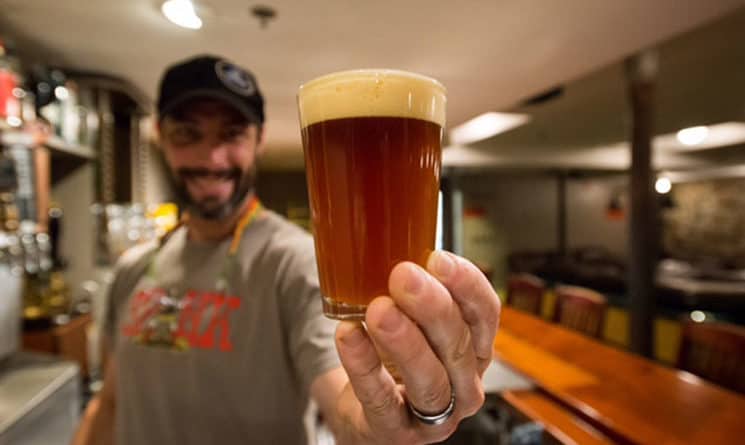If you grew up near the ocean, the aroma and flavor of Selkie will take you back. The Portsmouth Brewery’s newest creation is a beer brewed with locally harvested sugar kelp.
“When you first take in the nose of the beer, something strikes you immediately, like, ‘Hey, there’s something from the ocean in this,’” said head brewer Matt Gallagher.
Once the first sip goes across your palate, the sea taste is balanced by a residual sweetness from the barley malt in the beer, a Scottish red ale. But the aftertaste is distinctly briny.
“You’re sort of left licking your lips, like when you’re a child getting out of the ocean and you can still taste the salty brine on your lips,” Gallagher said. Twenty minutes later, he added with a laugh, you might have a burp that tastes “something similar to low tide.”
Selkie is the result of a collaboration with the University of New Hampshire’s aquaculture program, a joint venture between the UNH Cooperative Extension and New Hampshire Sea Grant. UNH researchers have been raising sugar kelp, along with steelhead trout and blue mussels, from a floating platform in the Piscataqua River, just off the shore of Portsmouth. Joanne Francis, who co-owns the Portsmouth Brewery and Smuttynose Brewing Company, contacted UNH about using kelp from the project in a local brew.
“Next thing we knew, they were on our boat,” said Michael Chambers, an aquaculture specialist with N.H. Sea Grant.
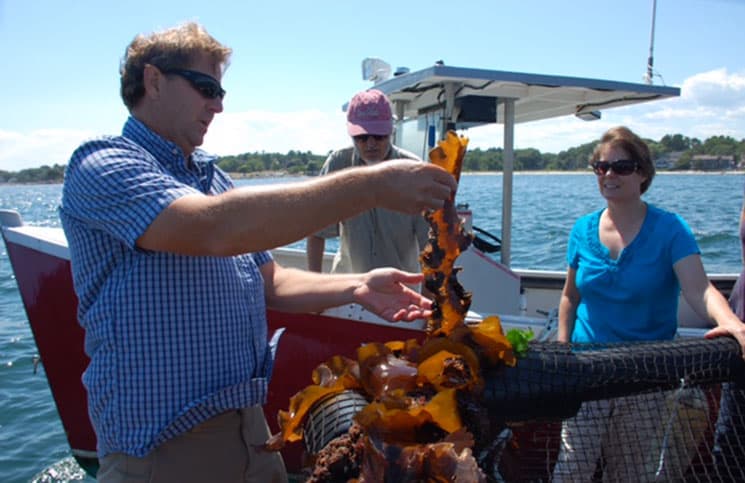
UNH aquaculture specialist Michael Chambers examines sugar kelp from the Piscataqua River. photo courtesy of
Rebecca Zeiber/N.H. Sea Grant
Francis, Gallagher, and others helped harvest about 60 pounds of kelp for use in the beer. The next trick, Gallagher said, was figuring out how to turn the sea plant into a drinkable beverage.
According to Gallagher, Francis had tried kelp beer in Scotland several years ago and enjoyed its unique flavor. Ever since, she’d been urging brewers at Smuttynose and the Portsmouth Brewery to give it a try. “Finally, I said, ‘Yeah, let’s do this,’” Gallagher said.
Initially, though, he wasn’t sure how it would turn out.
“I was excited about the challenge, but like any beer, you obviously want drinkability to come first,” he said. “Since I had never done any brewing with seaweed, I had a hard time picturing in my mind what kind of flavor profile we were going to take away from it.”
He decided to use the seaweed in a red ale, with barley malt sweetness balancing the briny ocean flavor. After washing the kelp, he boiled it with the beer wort for about 30 minutes, killing off any seaborne bacteria while extracting flavor and nutrients.
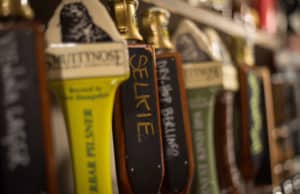
Selkie has now been on tap at the Portsmouth Brewery for just shy of a week, and Gallagher believes there is enough to last for another week or two. He said reactions to the beer, which is 4.9 percent alcohol by volume, have been overwhelmingly positive, though some have requested an even more kelp-forward flavor.
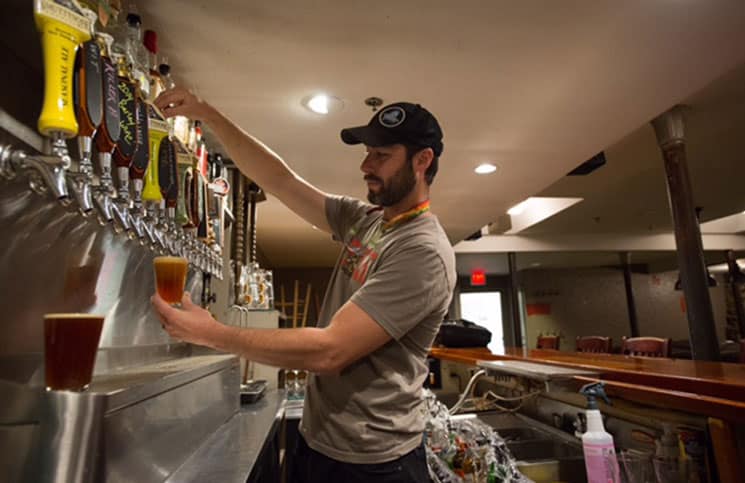
Matt Gallagher pours a glass of Selkie from a tap at the Portsmouth Brewery. photos courtesy of Scott Ripley/UNH
Sea to table
Though brewing beer with kelp may sound like an unusual concept, Gallagher said seaweed beer is nothing new. A century ago or more, before beer was homogenized by a handful of big companies, brewers used diverse ingredients in their brews.
“A lot of brewers early on were bringing balance and bitterness into their beers using whatever flora or fauna they could get their hands on,” he said.
Now, as the craft beer movement continues to explode, brewers are experimenting and rediscovering old techniques.
“They’re digging back into the ancient textbooks and finding out about these brewers 100 years ago brewing with these crazy things and trying to re-create those flavor profiles,” Gallagher said.
According to Michael Chambers, kelp and other sea vegetables offer a healthy and sustainable local food source for the future. He refers to kelp as the “super kale of the sea,” noting that it contains many nutrients not found in terrestrial plants.
“It’s a great, healthy product,” Chambers said. “It really adds some unique vitamins that are good for us.”
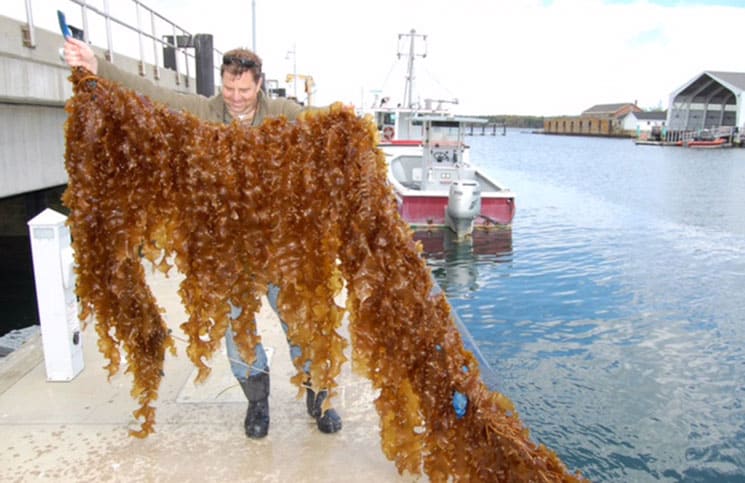
Within six months, juvenile kelp can grow to a length of eight feet. photo courtesy of Rebecca Zeiber/N.H. Sea Grant
There are plenty of tasty ways to serve kelp, he said, from kelp chips to seaweed salads to kelp smoothies. In some Asian countries, kelp and other sea vegetables are a staple of people’s diets. Around here, it’s just catching on, but as human populations grow and available space for raising food shrinks, sustainably harvested seaweed could help address local and global food shortages.
“There’s so much potential,” Chambers said.
UNH’s aquaculture program, he said, is raising kelp off the New Hampshire coast at a depth where it gets plenty of sunlight but does not get tangled up in passing boats. He said researchers planted juvenile sugar kelp in the winter, and within six months, the plants were eight feet long. “It grows so fast,” he said.
Not only is that good news for the local food supply, but it’s good for the ocean ecosystem. Kelp provides habitat for juvenile fish and removes harmful nitrogen from the water.
And seaweed could become a more common ingredient in local brews. Gallagher noted that sugar kelp is just one of many kinds of kelp in the sea, and they’re all fair game for brewing experiments.
“The sky’s the limit,” Gallagher said. “There’s lots of stuff out there in the ocean for us to start playing with.”

